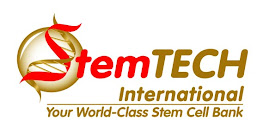 The treatment used stem cells from the patients' eyes |
Scientists have used stem cells grown onto contact lenses to improve the sight of people with cornea damage. The treatment was given to three patients by a team from Australia's University of New South Wales. All saw improvements within weeks. They used the patients' own stem cells in the treatment, detailed in the journal Transplantation, and a type of lens already used after eye surgery. UK experts said the small-scale study was promising.  |  This small-scale study reveals promising outcomes with the use of contact lenses This small-scale study reveals promising outcomes with the use of contact lenses  |
The cornea is the transparent layer that covers the eye - but it can lose transparency, damaging sight. In the most serious cases, people can need cornea grafts or transplants. Corneal disease can be caused by genetic disorders, surgery, burns, infections or chemotherapy. In this study, all three patients had damage to the epithelium - the layer of cells covering the front of the cornea. Eye cells The researchers in this study used limbal stem cells - found within the eye. Stem cells are "master cells", which have the power to transform themselves into other cell types. The cells can be taken from any healthy part of the eye and, because they are from the patient's own body, the transplant will not be rejected. They removed small samples of stem cells from the eyes of the three patients - two men and a woman - and grew them on contact lenses. The patients then wore the lenses for 10 days. During that period, the stem cells moved off the lenses and onto the damaged corneas. The patients were followed up for between eight and 13 months. 'Step forward' The researchers, led by Dr Nick di Girolamo, said each person's sight improved significantly within weeks of the procedure, and that it was a simple inexpensive technique which required a minimal hospital stay. Professor Kuldip Sidhu, director of the Stem Cell Lab and Chair of Stem Cell Biology at the University of New South Wales, who was not directly involved in the work, said: "This study is a step forward towards developing regenerative medicine with stem cells for other debilitating human diseases. And Loane Skene, professor of law at the University of Melbourne and former Deputy Chair of the Lockhart Committee on human cloning and embryo research, said: "Provided that patients are told that the new procedure is experimental and possible risks are not yet known, and they then consent to have it, this use of a patient's own stem cells is no more ethically contentious than a skin transplant" Sonal Rughani, of the RNIB, said: "This small-scale study reveals promising outcomes with the use of contact lenses. "We await further developments of this innovative nature." Source: BBC News 28 May 2009 | 
 Dallas-area residents Joe and Darlene Davis welcomed the news of a pregnancy and later the birth of their first son.
Dallas-area residents Joe and Darlene Davis welcomed the news of a pregnancy and later the birth of their first son. 












